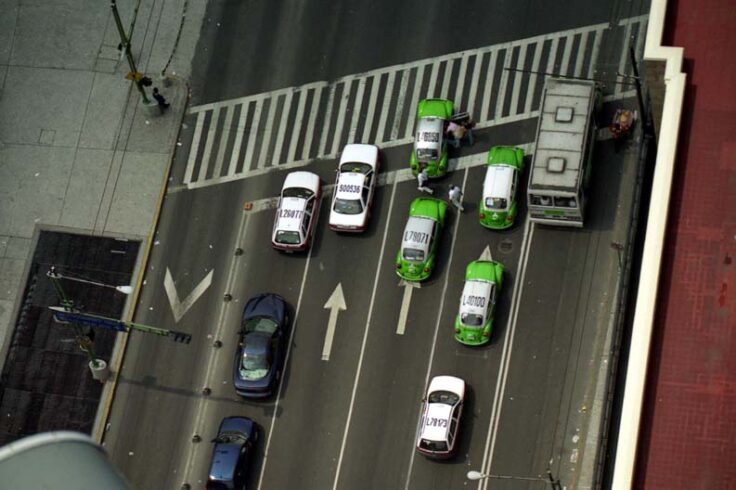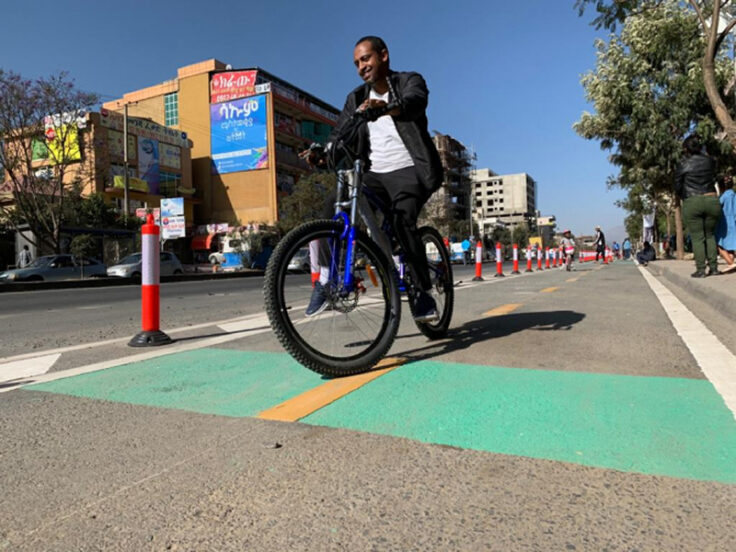May 23, 2024
Are We Falling Short On Our Global Road Safety Goals?
According to the World Health Organization (WHO), global road deaths average over 3,200 per day, with road traffic crashes remaining the leading killer of children and youth ages 5 to 29.
Read more of the key takeaways from the series of Recommitting to Road Safety webinars here.
Fifty-three percent of all road traffic fatalities involve the most vulnerable road users, including: pedestrians (23%); riders of powered two- and three-wheelers (21%); and cyclists (6%). Road safety advocates around the world are striving to cut the number of deaths and injuries from road traffic crashes in half by 2030 as part of the UN and WHO’s Global Plan for Road Safety: Second Decade of Action 2021–2030. Some progress has been made in recent years, however, as a 2023 WHO report found that road traffic deaths have fallen by 5% since 2010. Nevertheless, that figure is clearly not enough. Policymakers and governments need a more concerted and collaborative effort to reach their road safety targets, particularly for the supporting the most vulnerable communities in our cities.
For decades, ITDP has been working in our key regions of East Africa, Brazil, China, Indonesia, India and Mexico to transform urban environments and streets into safer, healthier, and more accessible place through the lens of safe and sustainable mobility. ITDP’s work on road safety, especially in Latin American cities, has notably used schools as anchors to reimagine and reallocate space on neighborhood streets to slow vehicle speeds and support children and families walking and cycling to and from school.

From parking reforms, to protected cycling infrastructure, to low-emission zones, ITDP knows that one of the keys to making urban roads safer is to provide reliable, affordable alternatives to private vehicle usage. Yet, governments continue to resist calls from advocates and experts to reduce and enforce vehicle speed limits, reallocate space to non-car modes, and price driving to reflect its true costs. Road safety initiatives that rely solely on improving vehicle technologies to avoid crashes or removing pedestrians and cyclists from the street will not be enough to bring us close to significantly reducing road safety deaths.
To explore these issues with key stakeholders, in April and May of 2024, ITDP’s Cycling Cities Campaign joined with high-profile partners at C40 and UN-Habitat to organize a series of virtual events centered on the theme Recommitting to Road Safety. Good practice case studies from Cycling Cities cohort members, including Addis Ababa, Ethiopia and Mexico City, Mexico, helped provide participants with real-world insights to better understand ways to apply a Safe System approach to road safety.
In Addis Ababa, one city example highlighted in the sessions, launched a road safety strategy in 2017 with the goal of reducing road injuries and fatalities by 50% by 2023. In the Ethiopian capital, pedestrians are often the most vulnerable road users, comprising 86% of traffic crash victims. Speed management was a key issue discussed in the webinars, particularly from motorcycles speeding frequently compared to other vehicles.
Together with U.S.-based researchers at Johns Hopkins University, the city developed a road traffic safety management system responsible for monitoring, evaluating, collecting and analyzing road safety data every six months to inform speed management measures. Between 2017 and 2019, Addis Ababa saw no increase in road fatalities and a even a 4% decrease in 2020. Between 2017 and 2023, there was a 16% reduction in deaths. While promising, Addis’ example demonstrates that, in order to achieve progress, traffic management and safety policies need to be made a priority for governments.

View recordings from C40 of the three-part webinar series here.
In Mexico, the capital of Mexico City created a road safety coordination area within SEMOVI, the Mobility Secretariat for the city. The city has compiled quarterly traffic event reports since 2019, which shows that incidents involving vehicle drivers and motorcyclists are trending upward. This has enabled the city to target training and education to motorcyclists to improve driving behaviors. To ensure streets are made safer for all cyclists, SEMOVI also aded 260 kilometers of cycle lanes across the city between 2019 and 2023 and expanded the network to peripheral neighborhoods.
The city has also reconfigured 117 intersections to improve safety for pedestrians and cyclists and added safe routes around schools and pedestrian crossings. To protect road users, Mexico City has also enforced speed limits for public transport drivers and improved motorcycle licensing and evaluation measures with safe operating workshops (for instance, with a helmet-wearing campaign). In addition, the city launched a ‘bike school’ for public transport operators, speeding offenders, and children, and implemented another campaign to raise awareness of cyclists on the street.
From these models and other opportunities discussed in the sessions, it was clear that cities need to continue to set ambitious targets to improve road safety as part of the UN’s Second Decade of Action push. But, while overall road deaths are trending down in some places, targets are being missed and for certain modes (i.e. motorcycles) dangerous traffic incidents are actually on the rise. In order to have a comprehensive and systemic approach to improving road safety, there needs to be a broader institutionalization of road safety within mobility and transport agencies, including in data collection and transparency, policy development, budget allocations, and beyond. Speed limit enforcement and behavior change around speeding, as well as post-crash care, also emerged as key themes within the Safe System approach that cities are looking for more guidance on.
While it is encouraging to have more recognition of road safety in the urban and transport planning sectors, much more work needs to be done if cities are to make streets better and healthier for all communities. Beyond this, there are also a myriad of health, climate, and economic benefits that can be gained by prioritizing road safety and speed management in favor of reducing car use and promoting more active, sustainable forms of mobility.
Continued change will require a collaborative effort among decision-makers, planners, and civil society groups to help ensure that the intersecting issues that contribute to road accidents and deaths are addressed at a systemic level.
